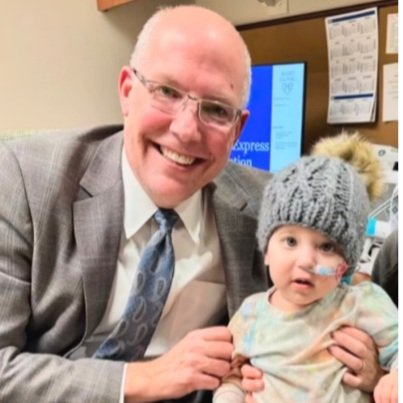Shake it for Shea - Shea’s LQTS Story
Baby Shea came into the world, early, in dramatic style. She needed resuscitation immediately after birth, and on her second day of life, Shea’s heart went into a type of arrhythmia called Torsades de Pointes. Doctors estimated that Shea’s QT interval was over 700 (normal is <440ms).
Genetic testing would later confirm that Shea had a de novo mutation in the KCNH2 gene indicating that she had Long QT Syndrome Type 2.
“As a second time mom, with my two-year-old son at home, I was absolutely devastated and terrified. Shea was on all sorts of equipment in the NICU to help her breathe and grow, and that was so scary, but the added LQTS Type 2 diagnosis felt gut wrenching”, said Shea’s mom Kira.
Shea’s parents, Kira and Mark are navigating their new ‘normal’, trying to focus on all the amazing things Shea is doing. However, following several negative experiences with medical teams early on in Shea's journey, Kira has become very passionate about families advocating for the best medical care to make sure they always feel supported and heard.
“Once we started seeing Dr. Ackerman as our main EP, we felt we were in the best hands and finally had a doctor who fully understood our journey and struggles, and he continues to be such a huge part of our journey.”
In 2023 Kira and Mark started their own 501c3 called the ‘Hearts in Harmony Foundation,’ and are now planning their second annual event called “Shake it for Shea”. Last year, the event raised an incredible $290,000 for Long QT Syndrome research at the Mayo Clinic's Sudden Death Genomics Lab, led by Dr Ackerman.
Kira and Mark’s passion now lie in finding better treatment options for Long QT Syndrome, as the current medications make Shea quite sick.
“While we still feel sad, scared, and flat out angry at times, we primarily focus on channelling that energy to turn as many possible lemons into lemonade. Shea has given us such a new perspective on life, and we don’t take a single moment for granted.”
To learn more about Long QT Syndrome, visit The SADS Foundation website at: www.sads.org.
Author: David Hutton.





